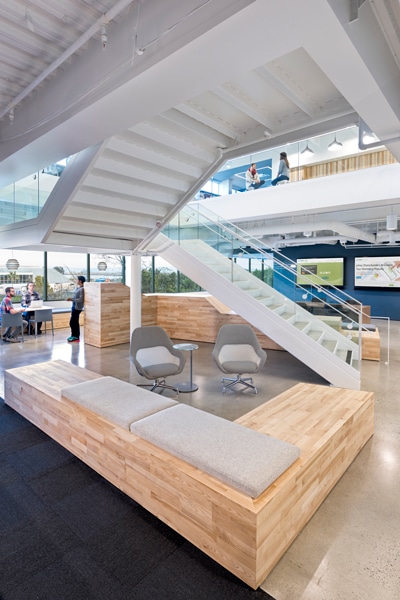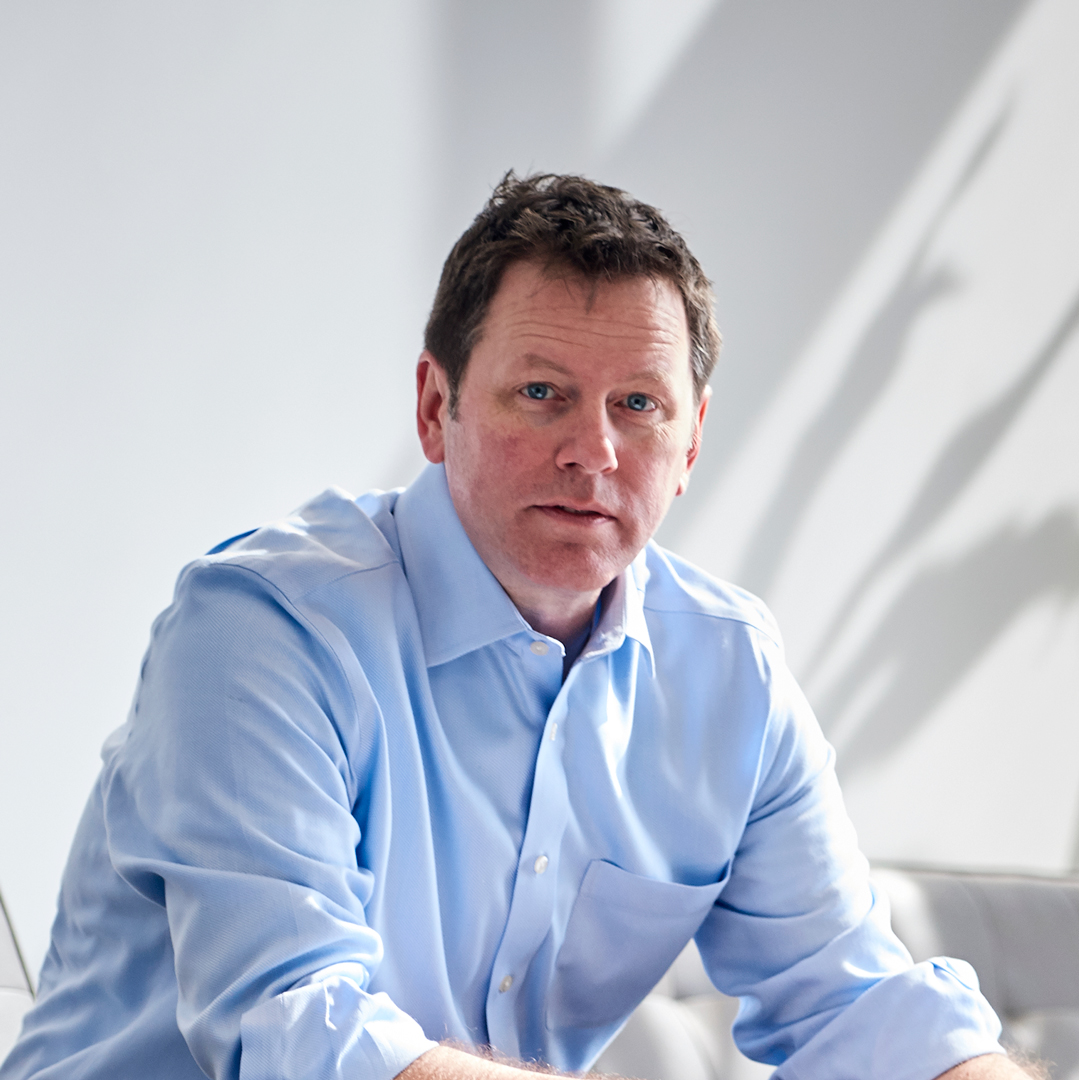|
Getting your Trinity Audio player ready...
|
Popular office design has completely transformed since the late 1970s, when the rise of the cubicle farm was beginning to make its way into the mainstream. For Acxiom, a data, technology, and services company that helps marketers deliver exceptional customer experiences, the workplace wasn’t evolving nearly as quickly as the company’s offerings.
Enter the workplace experience team.
The team has especially focused on workplace modernization within the last five years. They’ve worked tirelessly to continue updating Acxiom’s work spaces across the country, from supporting teleconferencing software to implementing open and bright floor plans to building a soccer field. These initiatives are meant to not only create more attractive and functional offices but to spur associates to do their best work.
American Builders Quarterly caught up with three members of the team—Chris Ruby, director of US facilities, real estate, and corporate insurance; Suzanne Lilley, interior design lead; and Marc Haynes, vice president of workplace experience—to talk about boosting employee happiness through design.
What can you do to prompt your coworkers to be open-minded about changes to their space?

Chris Ruby: I think the biggest thing that we do to help associates be open-minded is to share feedback. When we renovate work spaces or floors, we’ll go in after the fact and do town halls. We share feedback with people that haven’t had any recent modifications and say, “Here is the feedback from your peers who just went through a change to their work space; some of them were reluctant to begin with, but here’s what they’re saying now.”
The whole purpose of our group is to make work enjoyable. Encouraging associates and sharing the feedback from their colleagues helps them to be a little bit more willing to trust us.
It’s also the service after the sale, so to speak. Once we’re done with the job, we don’t leave. We’re there years after a job’s done to make any adjustments on an individual basis.
Suzanne Lilley: We suggest that they go visit with the other associates who have already converted to the open work space. It’s such a light, open, airy, pretty environment compared to the tall walls or the darker workstations that they had previously. It’s just a much more pleasant place to be overall.
Marc Haynes: There’s also a certain population that will never be pleased. So our overall goal is to ensure that we’re doing the greatest amount for the greatest amount of people who appreciate and benefit from it. For the other percentage, we offer alternatives, such as going home based or working in a space that’s not been renovated.
What are some innovations you’ve implemented?
Ruby: We’ve designed more collaborative spaces. We use BlueJeans technology [a cloud-based video conferencing service], and we are increasingly structuring our rooms around the technology. We build rooms specifically for videoconferencing, document-sharing, or BlueJeans meetings across multiple locations.
[The Acxiom Endpoint Team] goes to several trade shows every year to make sure we’re providing the most effective IM tools, or videoconference tools, that are available on the market. A lot of times, we’ll build rooms specifically for those.How can your physical space boost employee morale?
Ruby: Besides the work environment, we also integrate areas to take a break. We have a shuffleboard area and pool tables. We just built a large cafeteria on campus that really brings people together. We have a high-end coffee room. We have a movie theater room on campus.
It just encourages people that every now and then, it’s OK to get away from your desk and take a break, and do that with your colleagues. It gives them an area to clear their heads, so when they do get back to their desks, they’re more dialed into what they’re doing. Integrating the fun aspects of work with the associates’ work environment really helps boost morale.

How can your physical space put customers at ease?
Haynes: The spaces are designed with quite a bit of transparency. When the client is there, they’re able to go and interact with our workforce. It’s modern and attractive, so they understand that our company has a forward-looking strategy. Even though the spaces are designed transparently, they can be adjusted for privacy, because we certainly have clients that need privacy.
The other thing is, we design our client meeting space for servery, so that clients are able to get their refreshments, meals, and drinks without having interruptions to the meeting. It’s about comfort, the ease of collaboration, and being in a modern, transparent space.
What are some of the biggest transformations you’ve initiated at Acxiom?
Haynes: What Chris was describing earlier, that cafeteria—we call that floor in that building “Crossroads.” It’s associate learning space, it’s client meeting space, it’s a coffee bar, it’s an auditorium, it’s a movie theater. We have life-size checkers and Jenga. It’s a place for associates to have birthday parties, baby showers, et cetera, and for company events to be held. That was, to me, one of the biggest transformations that’s taken place.
Ruby: A lot of our buildings at Acxiom are 30 to 40 years old. When they were built, they were almost similar to lawyers’ offices. They had the old wood wall finishes, and they were closed in, with very little light throughout the space. We’ve opened everything up, installed glass throughout the space, and let the natural light through our buildings. Our old headquarters building where Marc sits and our building next to it—to see where they were three years ago compared to where they are today, it’s almost unbelievable that they’re the same interiors. It’s so bright in there, and so vibrant.
Those used to be the buildings where nobody wanted to work, and now everybody wants to be in those two buildings, because they’re so fresh and so bright and energetic. The changes to those buildings—and the associate enjoyment in those spaces—have been the biggest transformation that I’ve seen.

A Message from Principal Builders
Our Work is Our Word.
In pre-modern times, it was the Master Builder who possessed expertise in all trades to lead construction of beautiful and complex structures. PBI shares the Master Builder’s desire to know everything there is to know about construction and each trade. Our allegiance is to what will best serve our customers for the years they’ll spend in their spaces.


